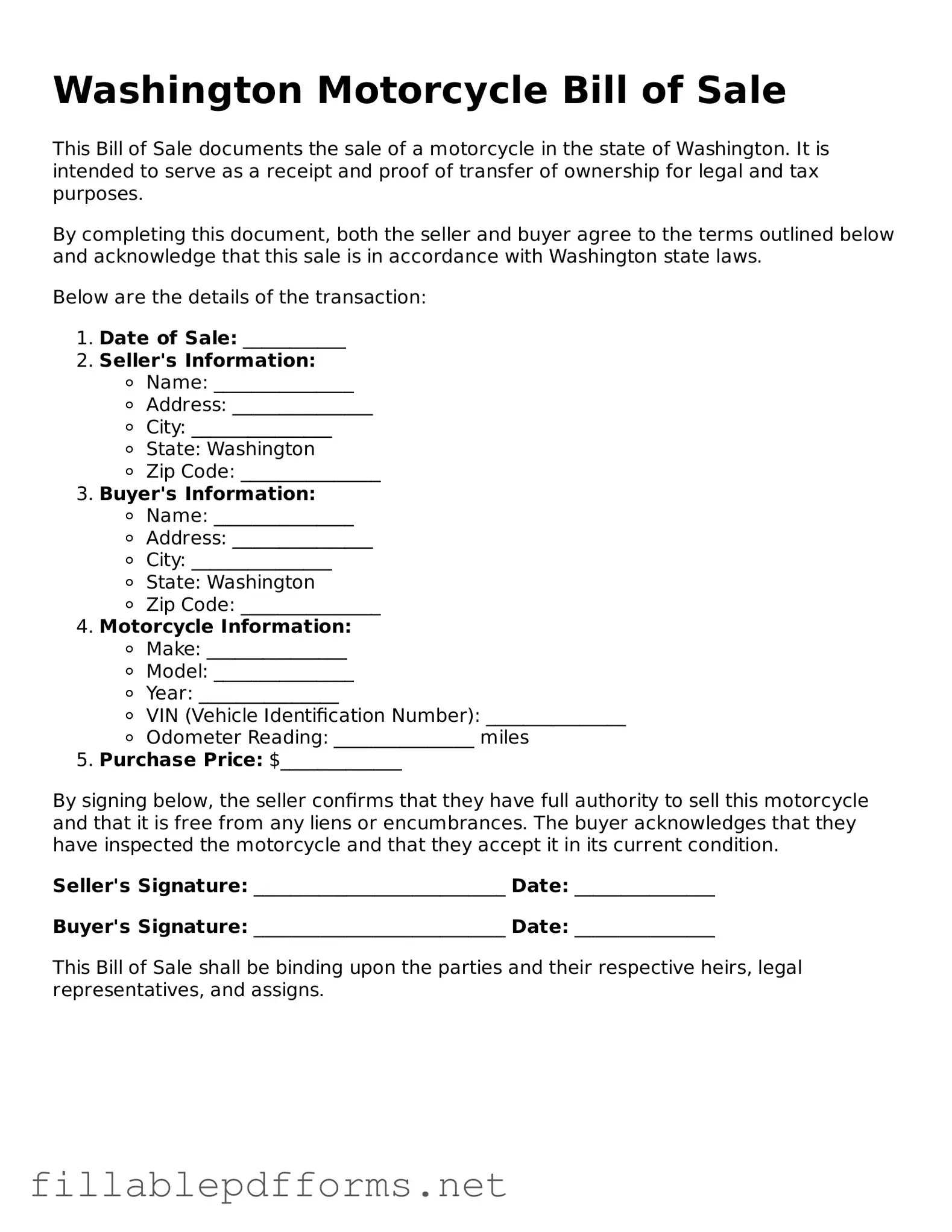Attorney-Verified Motorcycle Bill of Sale Form for Washington State
The Washington Motorcycle Bill of Sale form is a legal document that records the transfer of ownership of a motorcycle from one party to another. This form serves as proof of the transaction and includes essential details such as the motorcycle's make, model, year, and Vehicle Identification Number (VIN). Completing this form is crucial for both buyers and sellers to ensure a smooth and legitimate transfer of ownership.
Launch Editor Here
